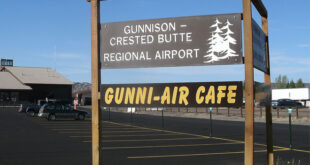Avalanches claim several lives, including a local man
by Mark Reaman
Colorado and much of the West is renowned for its tricky backcountry snowpack. That snowpack has claimed several lives in the last two weeks, including that of a local Crested Butte man .
As Crested Butte Avalanche Center forecaster Ian Havlick stated this week in his Backcountry Notes column, “It has been a hell of a month across the western states, with 11 avalanche fatalities in seven different states, and numerous close calls including public caught in vehicles in Utah, professional skiers resuscitated by friends in Tahoe, forecasters caught over the border in Canada, and an unknown number of other near misses.”
CBAC executive director Zach Guy emphasized that backcountry users need to always be on alert. “It is typical for Colorado to have tricky persistent weak layers buried in the middle or bottom of the snowpack. This winter is no different than that,” he said. “There has been a recent spree of avalanche fatalities in the U.S. in the past ten days. Most of the west had a dry early December and a dry early January. Both of these dry spells created problematic layers that have now woken up during the past few weeks of snowy weather. As an interesting side note, I pulled this directly off of Colorado Avalanche Information Center: ‘There have been ten people killed in avalanches in the United States since January 16.
Fatalities have occurred in Colorado, Utah, Wyoming, Montana, Washington and Alaska. This in the largest number of fatalities in January since at least 2001. In the United States, about 70 percent of fatal avalanche accidents occur within four days of the previous accident.’”
The persistent slab avalanche like the one that claimed local Brad Sethness can sneak up on people. “Persistent slabs also account for a large majority of avalanche fatalities in Colorado. They are tricky beasts that behave unusually; even avalanche professionals with the highest level of avalanche training and experience are commonly caught off guard by this type of problem,” Guy admitted.
“It’s easy to get surprised by these things when you can trigger them from low on the slope or from a far distance away or when the layers lurk deep and dormant until just the right amount of snow comes along or until you cross the wrong spot on the slope. I’ve seen slopes with hundreds of tracks on them rip out after the 101st person finds the sweet spot,” Guy continued.
“Decision making in avalanche terrain, especially with persistent slabs, is what we call ‘a wicked environment.’ We can make hundreds or thousands of route decisions or terrain choices every winter, but we rarely get feedback on whether it was the right or wrong decision. And when we finally do get feedback, it is often in the form of a serious injury or death.
“That’s not really a fair system, is it? Imagine doing dozens of homework assignments but never getting graded or seeing the answer key, and then on the day your teacher randomly decides to grade your homework, if you have one wrong answer, you get thrown out the back of a moving bus,” Guy said.
Guy said conditions constantly change in the backcountry around Crested Butte and users have to understand the danger and ways to pare down risk. “The avalanche danger is dynamic: The expected size, likelihood, and location of avalanches can vary from day to day. It’s important to update yourself on conditions [go to www.cbavalanchecenter.org] before heading out, and to be alert to signs of instability when you are out there. A slope that was safe a week ago might not be today. Recognizing avalanche terrain and how to avoid it is the best skill you can develop to handle uncertainty with snowpack and avalanche conditions. You can always default to low angle terrain—slopes less than about 30 degrees that aren’t connected to steeper slopes above—to reduce your avalanche risk to almost zero.”
Guy’s overall advice is to not take anything for granted. “Careful snowpack evaluation, cautious route finding, and conservative decision making are essential,” he concluded.
 The Crested Butte News Serving the Gunnison Valley since 1999
The Crested Butte News Serving the Gunnison Valley since 1999

